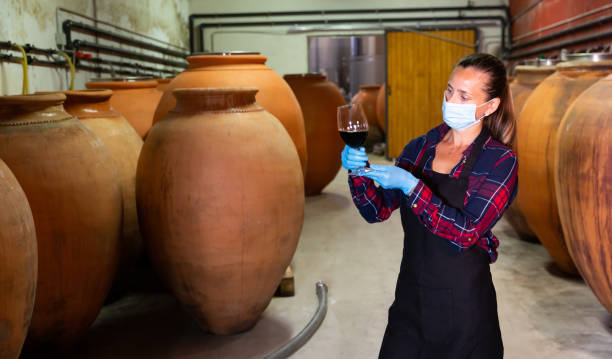Georgians are proud of their extensive and long-standing winemaking tradition. Traditional methods are revived, and the qvevri, an earthenware container used to preserve and age wine for a long time, is now the country’s official symbol. It’s been featured everywhere, from t-shirts to tea towels. While only about three percent of Georgia’s wines are produced in qvevri, they’re still an ideal of romance that honors the history of Georgia.
A small-scale producer Georgia is a wine exporter worldwide, and sales are increasing rapidly, especially within the US. Like many nations, it has the top bottles in its cellars, and visiting its restaurants and vineyards is the most effective way to appreciate the art of winemaking.
The oldest winemakers
Georgia is usually regarded as the “cradle” of wine because archaeologists have traced our oldest winemaking tradition to people from Georgia’s South Caucasus in 6,000 BC. Early Georgians discovered that grape juice could be made into wine by placing underground to keep it warm during winter. The qvevris they buried their grapes in could remain in the ground for as long as 50 years.
The wine was still a significant factor to the Georgians, who integrated it into sculpture, art, and grape-themed designs. There is also evidence of wine-drinking wares discovered in ruins and burial places.
Modern Georgian winemaking
The turbulent years that followed the Soviet period it was started as a good time for Georgian wines. The wines were far superior to those available for Russians, and the amount of land planted for vineyards grew dramatically. However, in the 1980s, Gorbachev’s anti-alcohol policy shut down specific wineries that were older. Since then, Russian embargoes on wine have affected production, and the industry has taken a long time to recover following independence.
The ancient Kvevri, or clay jar method, is fundamental to winemaking in Georgia.
Georgia is currently creating its name in the market for natural wines. Although it’s only a tiny percentage of its production, the increase in interest in traditional methods and the use of clay for storage and fermentation has helped put Georgia back at the top of the wine industry.
The best places to experience Georgian wine culture
The nation’s principal wine regions are Kakheti and its Telaviand Kvareli areas, Kartli, Imereti, Racha-Lechkhumi and Kvemo Svaneti, and Adjara. While more modern wineries are expanding in size, however, there are thousands of small farmers who are using traditional practices.
The Alaverdi Cathedral in the Kakheti Region dates back to the 6th century. Monastery wine tastings often take place in the wine cella…
Read More PHOTOGRAPH COURTESY GEORGIA TRAVEL
Kakheti is a must-visit for those who love wine. Many tours and vineyards are open to tourists outside the group. It’s a great day excursion from Tbilisi, or you could stay for the night. The regions comprising Sighnaghi and Telavi are easy to access, and both are brimming with restaurant and cellar doors. Make sure to visit the Chavchavdze Estate to enjoy one or two glasses and a dose of local culture as it’s been transformed into an art gallery of wine.
Georgian wines to test
With unique topography and climate and over 500 varieties of grapes, you can spend your whole life drinking Georgian wine and not attempt to taste it all.
One thing to be sure of when you are tasting one that is amber or orange. It is believed to be the first wine made in the United States. They are made from white wine grapes, but the skins remain for several days, which gives them more flavor and color.
For white wine, try Rkatsiteli, Chinuri (which also produces lovely sparkling), and for a wine made by Qvevri, kachori Mtsvivani is stunning.
If you are looking for red wines, choose those made with local grapes, the most popular variety grown in the country. It produces vibrant color and a pronounced depth of flavor. Usakehlouri is from the west, and Tavkveri, located in Kartli, are both recommended.
Most Georgian wine is dry, but sweet and semi-sweet wines are gaining popularity because of the Slavic market. Try Usakhelauri Khvanchkara, Akhasheni, and Tvishi varieties to satisfy your sweet cravings.




